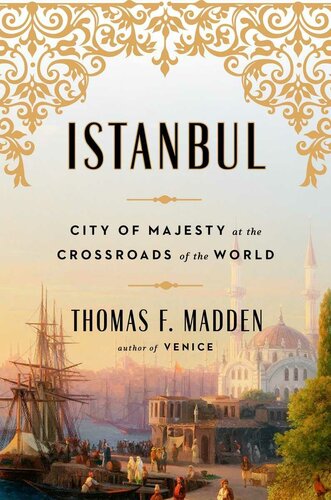
Istanbul
City of Majesty at the Crossroads of the World
کتاب های مرتبط
- اطلاعات
- نقد و بررسی
- دیدگاه کاربران
نقد و بررسی

October 31, 2016
In this fast-paced account of Europe’s largest city, Madden (Venice: A New History), director of the Center for Medieval and Renaissance Studies at St. Louis University, recounts how Istanbul gained its status as “a meeting place and a battlefield for cultures.” Founded by Greeks as Byzantium in 667 B.C.E., it served as a kind of urban bridge between Asia and Europe. As Constantinople, it became the eastern center of Christianity until it was conquered by the Ottomans in 1453. Thereafter, it was, until the modern period, a strikingly cosmopolitan place, about 40% non-Muslim in 1700, with significant populations of Greek Orthodox, Jews, and Armenian Christians. Madden adroitly describes the succession of the often bloodthirsty rulers of premodern Constantinople, including Murad III (who ordered the strangulation of his five brothers in 1574), as well as health crises, such as the bubonic plague epidemic of 542 that claimed an average of 5,000 lives per day. Unfortunately, Madden races through the city’s modern period, from the Young Turks’ 1909 uprising to the 21st century, including a mere paragraph on the anti-Greek riot of September 1955 that caused most of Istanbul’s remaining Greeks to flee the city. This flaw aside, Madden succinctly captures the city’s often key role in global political and religious history.

October 1, 2016
The author of Venice: A New History (2012) returns with the astonishing and sanguinary story of the iconic city on the Bosporus.Madden (Director, Center for Medieval and Renaissance Studies/St. Louis Univ.) begins by noting the obvious: no text can possibly contain the sprawling story of Istanbul. Undaunted, he begins in 667 B.C.E. and whisks us along through the centuries, ending with current times, still a city at the crossroads of the world. Dominating the text are tales of empire, war, commerce, and religious strife and wrenching accounts of brutality: ambitious family members murdering one another in the quest for power; invaders slaughtering others by the thousands, raping, looting, and sacking. Madden is fond of the city, however (he has been there numerous times), and generally reserves judgment as he soars along, only occasionally bogging down in detailed accounts of battles and internecine nastiness. He does spend time telling us about the design and construction of some buildings that remainand some that do not. We learn about the lack of urban design that characterized the city for centuries and its once-hopeless infrastructure; about the voice of Mark Twain saying that the city was best when viewed from a distance; and about customs occasioned by location and religion. (The author offers an enlightening section on harem life.) Madden, who prefers description and explication and narration to judgment and condemnation, explores the religious conflictse.g., the split between Christianity (East and West) and the rise of Islam. We also witness the extraordinary, even grotesque, lengths to which men have gone to achieve wealth and power. In our own day, Madden views the rise of nationalism as a new worry for the city, as well as the enduring religious conflicts that seem likely only to intensify. An illuminating journey through the history and culture of the metropolis that still towers over all other cities in Europe and the Middle East.
COPYRIGHT(2016) Kirkus Reviews, ALL RIGHTS RESERVED.

October 1, 2016
Over the centuries, the city of Istanbul has had many names, among them Byzantium, New Rome, and Constantinople. Today, Istanbul is a vibrant, economically prosperous, and energetic city of nearly 15 million inhabitants that straddles the Bosphorus Strait, positioning it in both Europe and Asia. Istanbul remains Europe's largest city and one of the most thickly populated metropolitan entities in the world. In this erudite but accessible book, Madden (medieval history, Saint Louis Univ.; The Concise History of the Crusades) describes the historical evolution of Istanbul from its origin to the present day, informing how different cultures, ethnicities, and religions have stitched the fabric of this genuinely multicultural city. In the process, the author vividly demonstrates how Istanbul, founded by the Greeks, became the target of multiple empires for more than two millennia. Madden allows readers to experience Istanbul through its varied inhabitants as well as the rulers who built, and sometimes destroyed, this megalopolis. VERDICT Students of history and general readers alike will benefit from the insight and vignettes presented in this fascinating narrative.--Nader Entessar, Univ. of South Alabama, Mobile
Copyright 2016 Library Journal, LLC Used with permission.

























دیدگاه کاربران